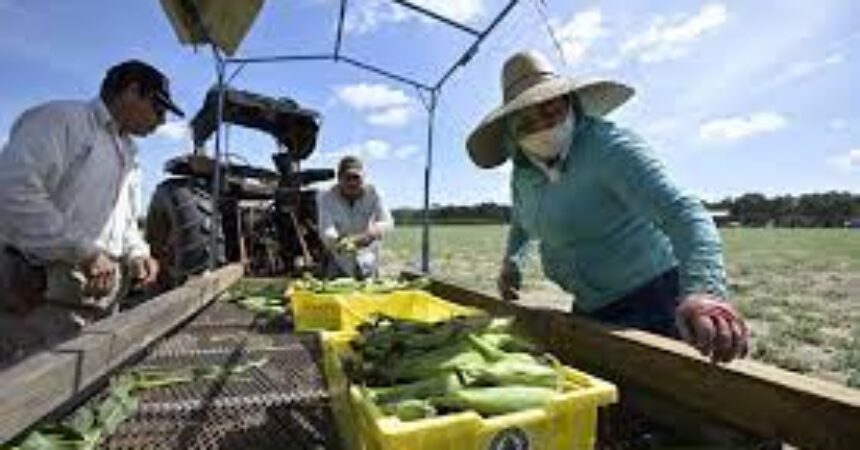
Budget in ‘good shape,’ but surpluses will dip

Photo special to the Outlook
By Jim Turner
News Service of Florida
State budget leaders expressed some caution that general-revenue surpluses are projected to decline over the next three years, and that’s without factoring in the impact of Hurricane Idalia.
The Joint Legislative Budget Commission, which is made up of House and Senate members, received a presentation about a long-range financial outlook. House Appropriations Chairman Tom Leek, R-Ormond Beach, said the “state’s budget is in good shape.”
But as lawmakers prepare to piece together a new budget during the 2024 legislative session, Leek acknowledged they need to be aware that general-fund surpluses are forecast to go from $7 billion in the 2024-2025 fiscal year to to $2.72 billion in the 2026-2027 fiscal year.
Senate Appropriations Chairman Doug Broxson, R-Gulf Breeze, later backed Leek’s assessment that the state is “in good shape,” while calling the outlook “pretty realistic.”
“We are certainly in a much different position from last year,” Broxson said after the meeting. “We took a lot of those dollars, as you saw, to departments like the Department of Transportation, and we’ve given them real flexibility on how to reduce (traffic) congestion across the state, which I think is applauded by most people that live in the congested areas.”
Among the commission’s actions last Friday was to authorize more than $1.55 billion for the Department of Transportation to start a multi-year effort intended to speed construction of 20 road projects across the state.
The money, part of a $7 billion program dubbed “Moving Forward Florida,” was included in the budget for the fiscal year that began July 1. But the department needed additional authority to designate the money to Moving Florida Forward projects, which include $1.451 billion to reconstruct Interstate 4 from ChampionsGate to the Osceola Parkway in Central Florida and $479 million to add auxiliary lanes to Interstate 75 between Wildwood and Ocala.
Meanwhile, Division of Emergency Management Director Kevin Guthrie told lawmakers that Hurricane Idalia won’t be as costly for the state as Hurricane Ian, which devastated parts of Southwest Florida in September 2022. The Category 3 Idalia made landfall Aug. 30 in the Keaton Beach area of Taylor County and went through other rural areas of North Florida.
“At this point in time, our most heavily damaged area is going to be Florida’s farmers and all the crops that they have, from timber to dairy to chickens,” Guthrie said. “It’s estimated that potentially there’s a loss in chickens of about $5 (million) to $7 million across the state.”
Guthrie noted that farmers continue to await money from the U.S. Department of Agriculture to help cover Hurricane Ian damage.
The University of Florida-Institute of Food and Agricultural Sciences has estimated Ian’s agricultural damage at $1.03 billion. The citrus industry has estimated losses from the storm at $675 million, $425 million more than in the UF report.
Amy Baker, coordinator of the Legislature’s Office of Economic & Demographic Research, told lawmakers the state’s financial picture remains “positive,” but there are signals “you may have a structural imbalance emerging and you may have to keep your eye on it.”
“Right now, the headline numbers are still good,” Baker said. “But that doesn’t mean every household in Florida is in a good place right now.”
She added that economists worry about the state having to handle more than one crisis in different geographical areas, a protracted federal government shutdown or a Federal Reserve “miscue” that worsens inflation.
“Our reserves are so big right now they’re not threatened by those immediate outlays that we’d have to make and then the federal government, of course, comes in with some immediate outlays as well,” Baker said. “The challenge for the state would come if for some reason the federal piece was choked off or not available in a timely fashion.”
Baker said conditions have shifted “back to normal” as the economy retains “its footing” after sustaining damage early in the COVID-19 pandemic.
Economists have added $2.77 billion to the state’s general-revenue tax projections for the current fiscal year and next fiscal year, giving lawmakers more money to play with when they start drawing up a 2024-2025 budget during the legislative session that will start in January.
Overall reserves in the general-revenue fund and other pots of money are at $13.6 billion, down from $17.4 billion a year ago. Baker said the reserves remain “historically high.”
General revenue plays a critical role in funding programs such as education, health care and prisons.
Baker said the state’s growth will continue to be driven by the arrival of Baby Boomers, people born between 1946 and 1964. But that growth will start to put pressure on government services, from Medicaid costs to things such as better street lighting or larger lettering on street signs.
“As we move into 2030, but particularly beyond 2030, you’re going to see increasing demand for services from that Baby Boomer generation that we haven’t experienced up to now,” Baker said.







